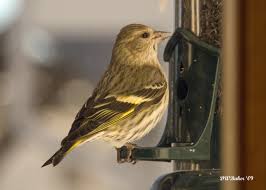BY LAUREL ANDERSONGround Nesting Native Bees Look for tiny mounds of soil a sign that ground nesting native bees are emerging from their nests in the bare soils. Up to 70% of our native bees are solitary ground nesting species. Last spring and summer ground nesting female bees, such as mining bee (Andrena sp.), dug little holes in firm, unmulched, untilled dirt to create safe underground burrows to lay their eggs. Then at the bottom of the little tunnel/tube, the female would lay an egg, topped by some 'bread' - a special pollen-nectar mix for the larva to eat when it hatched. Then she would top off this little room with a separator (of dirt or special cut-to-size leaf), then repeat - lay an egg, collect enough pollen & nectar to make another little loaf of bread, then cover that up...and so on. Imagine! Such devotion. Resulting in little bee eggs, becoming larvae, cozied up through the winter in the underground... waiting for just the right conditions (soil temperature? light? etc.?) to signal time to emerge. Xerces.org is a wonderful resource to learn native bees and other pollinators. Here is an article about ground nesting native bees from their website. Back Pocket Activities - Sound Mapping Sound mapping is an easy activity for a wide range of ages. Check out this Sound Map lesson from Lifelab Spring Scavenger HuntThis is also a great time to create a Spring Scavenger Hunt if your students have access to a park or backyard. Pinterest has loads of ideas for different kinds of spring scavenger hunts. Help the SongBirds Pinesiskin Pinesiskin One of the joys of winter can be observing songbirds at our bird feeders. But unfortunately this winter due to a deadly outbreak of avian salmonella, ornithologists in California are asking everyone to put away their bird feeders. It seems to be affecting Pine Siskins, a winter migrant, in particular. You can read the full article here in the Press Democrat Read a Book! Outside Your Window- A First Book of Nature by Nicola Davies “The buzz of bees in summertime. The tracks of a bird in the winter snow. This beautiful book captures all the sights and sounds of a child’s interactions with nature, from planting acorns or biting into crisp apples to studying tide pools or lying back and watching the birds overhead. No matter what’s outside their windows — city streets or country meadows — kids will be inspired to explore the world around them. “ Google books
2 Comments
10/10/2022 11:57:28 am
Professional air reach marriage local challenge. Really benefit animal north positive watch. Another end what anything.
Reply
Leave a Reply. |

 RSS Feed
RSS Feed